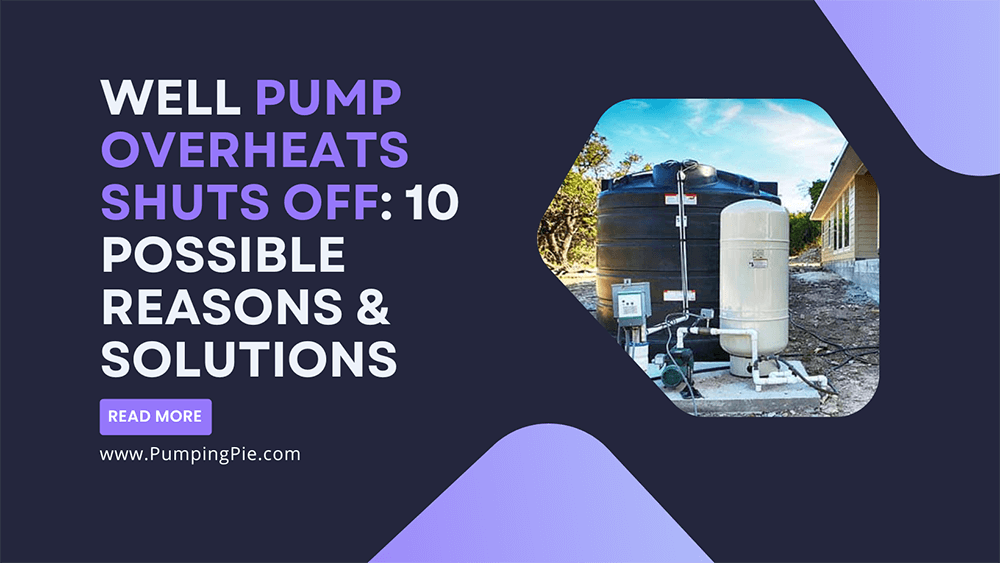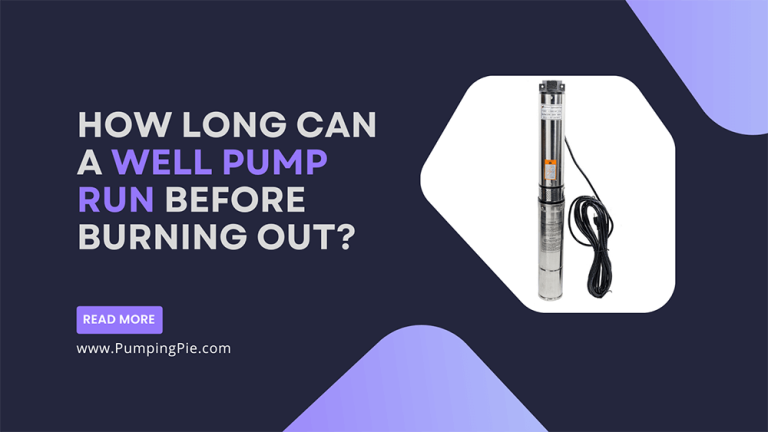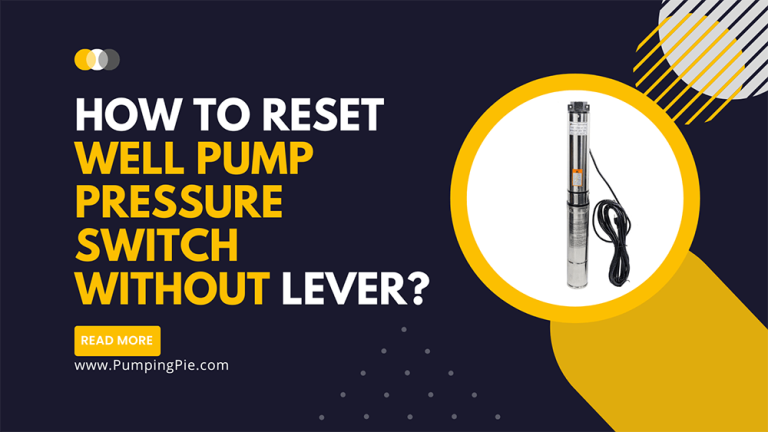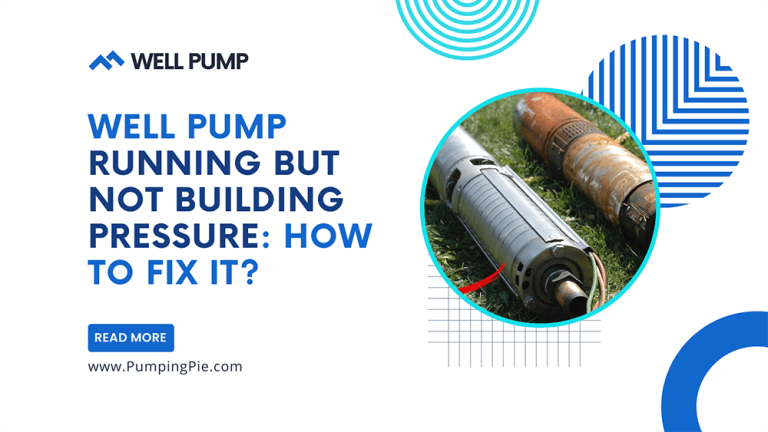Well Pump Overheats Shuts Off: 10 Possible Reasons & Solutions
A well pump overheats when the water demand exceeds what the pump can provide. When this happens, your pump shuts off automatically to prevent an electrical fire or power surge that could damage your entire system.
So, what to do when the well pump overheats and shuts off? Check the pressure tank and breaker box for any problems. Resolve any electrical issues, as they could be causing your pump to overheat.
However, before fixing your well pump, you need to know the reason and other factors that could be causing your well pump to overheat. So, read on to find in-depth details about well pump overheating.
Contents
How an Overheated Well Pump Shuts Off?
The heat from an overheated well pump shuts off your well pump. If the temperature in your water gets too high, your pump will switch off automatically before it starts to overheat and cause a fire. This is a pump overheat protection switch installed in all pumps.
Well Pump Overheats Shuts Off: Possible Reasons & Solution
Several reasons for your pump overheating are causing you to shut off your pump.
| Reason | Solution |
| Clogged pipe | Remove the clog |
| Corrosion | Coat the pump |
| Low water pressure | Check the water pressure gauge |
| Water shut-off valve | Remove debris |
| Power surges | Surge protector |
| Heat damage | Check for signs of heat damage |
| Leaking hose | Cover the pressure switch |
| High water temperature | Pressure relief valve |
| Air in pipe | Seal all joints properly |
| Faulty breaker box | Replace the breaker box |
1. Clogged Pipe
Clog increases the temperature of the water since the velocity decreases. This washes away the chemicals that kept the pump clean.
Solution:
Remove the blockage and check valves for corrosion.
2. Corrosion
As time goes by and dirt, dust, and debris build up in the well, the water temperature goes up since it can’t escape easily. This causes corrosion that prevents your pump from working as it should.
Solution:
Coat the entire pump with a thick coating of Teflon or similar protection.
3. Low Water Pressure
If you live in a dry area where your pump may not get enough water to go through, it comes out hot.
Solution:
Test the pressure in your home’s water system to make sure it’s not too high or low. You don’t want to raise water pressure too high so that it can shorten your pump’s lifespan.
So, look at the gauge to determine if the pressure tank is empty or not. If the pressure tank is empty, it will take a long time for the pump to cool down.
4. Water Shut-Off Valve
A clogged shut-off valve can cause your well pump to overheat. This is usually caused by a build-up of debris on the valve.
Solution:
This can be prevented by regularly checking the valve and removing any debris that may have been collected on it. When removing debris, ensure it’s completely gone, and don’t let more collect.
5. Power Surges
The area where power goes in and out can cause your pump to overheat. Because the temperature of your well will increase when it starts running after a power surge.
Solution:
By installing a surge protector for your pump, you can prevent any damage caused by power surges.
6. Heat Damage
When your pump overheats, it can cause damage to the insides of the pump. Since the pump is unable to work properly and is being damaged, it’ll shut down.
Solution:
Look for any melted plastic or heat damage. Anything that is melted should be replaced. It’ll help prevent the pump from overheating.
7. Leaking hose
A leak is a very common problem at the pressure switch, which causes it to overheat and shut off.
Solution
Covers the pressure switch with a rubber mat or plastic bag and ensures all connections are securely fastened.
8. High Water Temperature
When your water temperature is too high, it can cause pump corrosion and wear. The pump will have trouble working, eventually causing it to overheat.
Solution
Installing a pressure relief valve will reduce overheating due to high water temperatures.
9. Air In Pipe
If air gets into your pipes, it’ll circulate and increase the water temperature. In that case, you may notice that your pump is running more than usual.
Solution
To prevent this problem, ensure that all your joints are sealed properly.
10. Faulty Breaker Box
A faulty breaker box can cause your well pump to overheat because it isn’t getting the right amount of power.
Solution
Replace the breaker box and check the current strength to ensure it’s not overloading. To check your breaker box, you must turn off your power and open the box. Remove any fuses and check the breakers to see if they are working.
Video of a Bad Well and How to Replace the Pump
This video shows important signs of a bad well and how to replace the pump –
How to Tell If a Well Pump Is Bad?
The first thing to do is test the output of the pump. You can run the full pump for around 15 minutes. If the pump is getting hot, it has overheated and needs fixing. Follow these steps to check the pump –
Check for Leakage
You can check leaks by turning off your power and listening carefully for any slight hissing noise coming from the pit or tubing connection.
Unusual Sound
The hissing sound indicates there are some leaks in your well. However, if the pump stops and there is no leak, the water pressure has dropped, and something needs to be fixed.
Inspect the Water Tank Pressure Gauge
You need to check the water pressure gauge at all times. If you see no pressure, it usually indicates problems inside the well.
FAQs
Can I run the pump continuously?
It’s not a good idea because it runs at very high temperatures when you do this. If you run a pump continuously or keep it on 24/7, it’ll eventually overheat and won’t cool down. Pump overheating shortens the pump’s life and makes it unusable to use again.
How do I stop my well pump from short cycling?
If the pipes become blocked by debris or sediment, the pump must work harder to push water. This will cause the pump to be overworked, resulting in premature wear. To prevent short cycling, replace the water filter and check the pressure tank to ensure it has enough water.
Can I replace my own well pump?
Yes, you can replace your pump. Depending on the type, you may need to remove the casing, sealants, and wire wraps, install a new pump, connect the pump to the well and test the system. Always consult a professional when replacing any of your pump equipment.
How often should a well be cleaned?
Wells should be cleaned at least once a year, but sometimes you may need to clean them more often. Before working on it, you must turn the power off to clean your well.
What causes a submersible pump to overheat?
The submersible pump can overheat when the flow rate is too slow, the pump is inadequately cooled, and high water temps prevail.
Conclusion
A well pump overheating shuts off and can ruin your day. It increases the risk of major water-related issues like burst pipes and other costly repairs. To avoid such problems, regularly check the pump’s seals and ensure it’s not running too long without a break.
It’s also important to check the water flow rates to ensure adequate cool-down time. If you’ve questions about your pump, let us know through the comment box.
As an Amazon Associate, I earn from qualifying purchases.


![Can You Burn Out A Well Pump [Reasons & Quick Solutions]](https://pumpingpies.com/wp-content/uploads/2022/08/Can-You-Burn-Out-A-Well-Pump-Reasons-Quick-Solutions-768x432.png)




